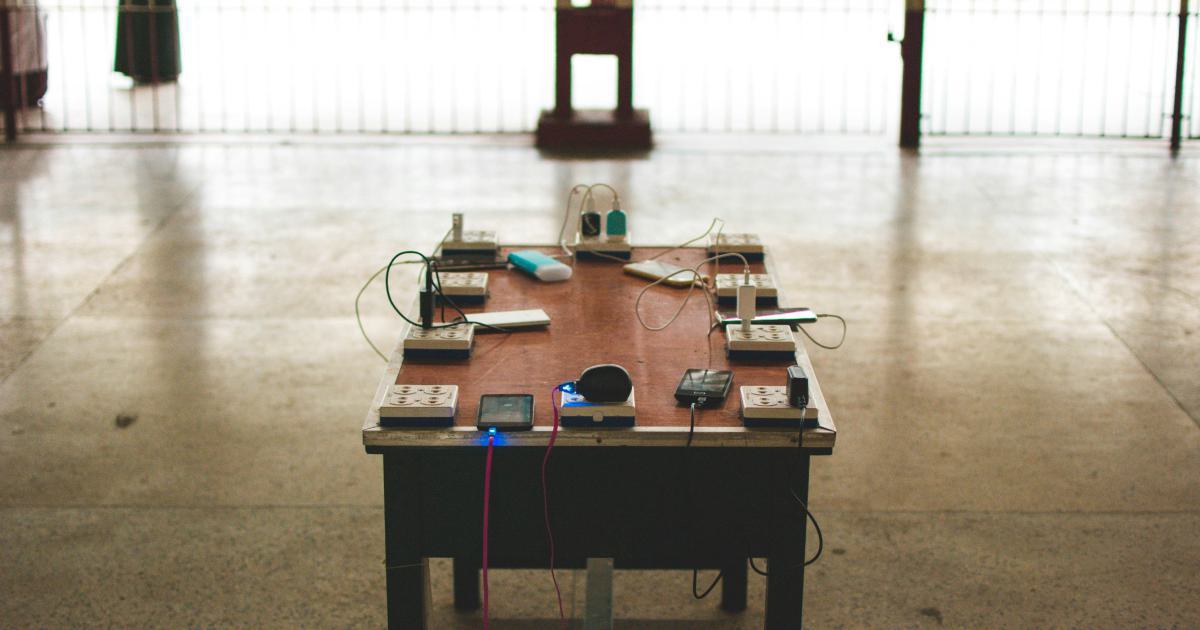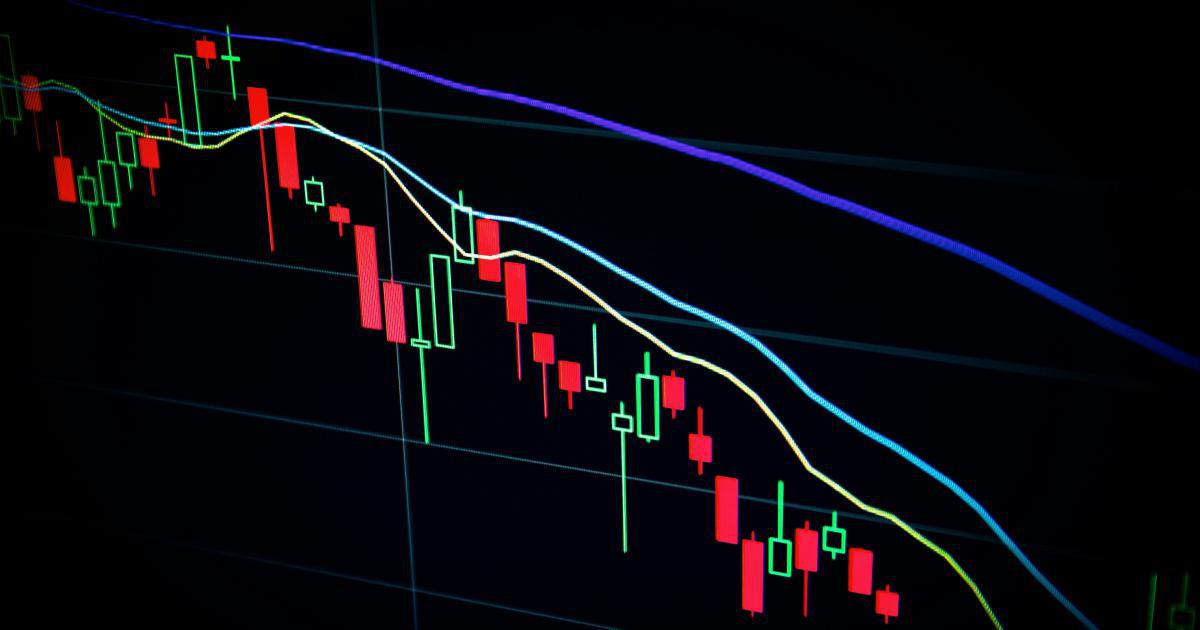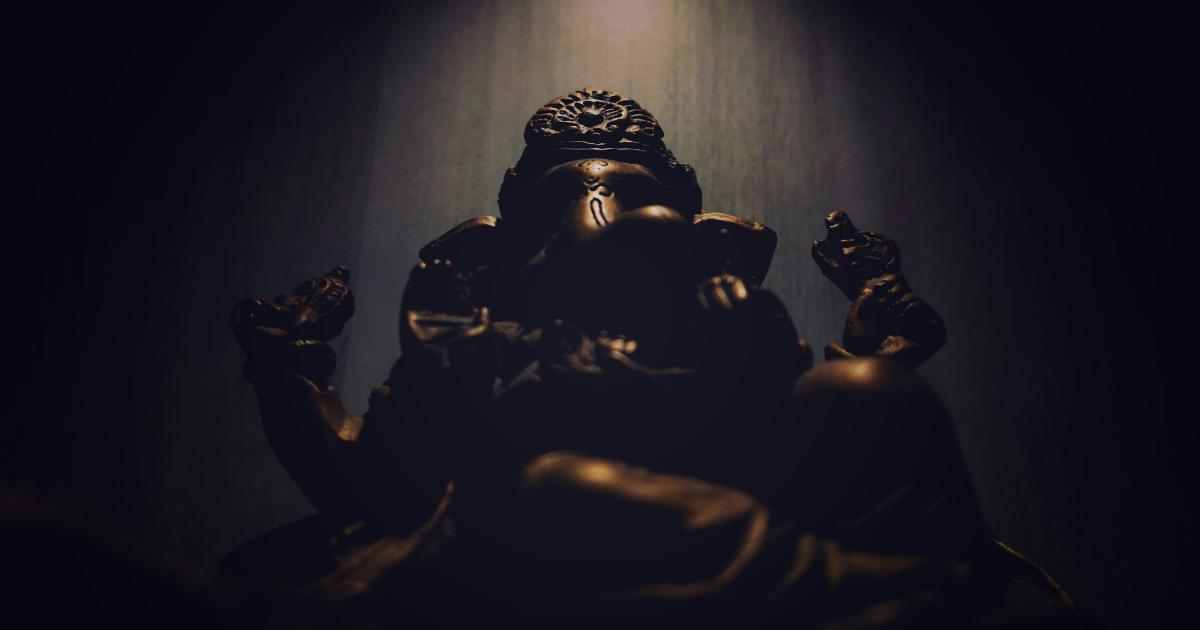5 Habits of Elite Traders with Laser Focus

Elite traders are not born—they are meticulously cultivated through disciplined routines, constant learning, and an unwavering commitment to achieving laser focus. In the world of trading, where markets fluctuate rapidly and emotions can run high, maintaining a clear, strategic mindset is paramount. This article examines the five core habits that elite traders rely on to stay ahead of the curve. We dive into actionable tactics, share real-world examples, and shed light on how these habits can be integrated into your trading routine. With insights on rigorous preparation, risk management, continuous learning, strategic planning, and emotional control, you’ll discover how adopting these habits will not only sharpen your decision-making but will also usher in sustainable success.
Elite traders understand that success is not dictated by luck—it’s the result of steady cultivation of skills and an unyielding commitment to excellence. Embracing laser focus from the very start of your trading day enables you to sift through noise, identify genuine opportunities, and execute decisions with precision. Within the next sections, we will break down these key habits and provide step-by-step recommendations on how to transition from a casual trader to an elite one. Each habit is backed by real-world case studies, highlighting how traders have refined their craft and emerged victorious even in volatile markets.
Habit 1: Rigorous Routine and Preparation
A well-structured trading routine serves as the backbone of every elite trader's day. Discipline in your daily routine is not just about keeping time—it is about creating an environment where decisions are made based on thorough analysis rather than impulse. Traders who establish a rigorous routine start their day early, dedicating ample time to market research, review of overnight developments, and understanding emerging trends. Over time, such rituals help in developing a consistent state of mind where decisions are measured and precise.
The Power of a Pre-Market Ritual
Before the market opens, elite traders use the first moments of the day to set the tone. Many begin with a mindfulness exercise or a short meditation session to clear their minds. This helps eliminate external distractions so that they enter the market with a state of alert readiness—a state often described as “laser focus.” After calming the mind, the next step is reviewing global news and overnight market movements. This concentric approach enables traders to connect the dots between various market influences and their own trading strategies.
For instance, seasoned traders will often study charts from previous trading sessions, analyzing resistance and support levels. They combine this with economic calendars, leading to strategies that evolve as conditions change. It is not uncommon to see professional trading teams discussing insights as early as 5 AM in major financial centers around the globe. The benefits of such a routine are manifold: reduced stress, enhanced decision-making, and a sharpened ability to react swiftly when market conditions shift.
Structured Analysis and Checklist Development
Another critical component of preparation is the use of checklists. Elite traders often maintain detailed pre-trading checklists that include items such as reviewing technical indicators, setting stop-loss orders, and confirming whether a trade aligns with overall market sentiment. This systematic approach ensures that no element of risk management is overlooked.
A well-executed routine can involve analysis of multiple asset classes—stocks, options, forex, and commodities. By moderating your focus to one or two sectors you are most familiar with, you can deepen your insight. In contrast, juggling too many asset types may result in diluted attention and misinterpretations. A disciplined routine can help you calibrate your attention where it matters most, effectively guiding you through the intricacies of market movements.
Consider a case study from a veteran trader who began his career without any planned routine. Early in his journey, his trades were erratic, leading to significant losses. Recognizing the gaps in his approach, he invested time into developing a consistent schedule that included reading market reports, performing technical analyses, and planning possible exit strategies. Over time, this led to improved reaction times and a marked decrease in impulsive decisions. His journey is a testament to how a structured routine can transform the chaotic nature of early trading attempts into a focused, professional approach.
By sticking to a routine forged through discipline and iterative improvements, elite traders are able to build resilience and adaptability—qualities that are critical in a constantly evolving market. With laser focus, the brain retains only the necessary data, filtering out information overload and emotional triggers.

Habit 2: Mastering Risk Management
In trading, risk management is often considered the cornerstone of longevity. Elite traders consistently emphasize the importance of knowing how to protect their capital. A single misjudged decision can quickly erode hard-earned profits. Therefore, controlling risk is not simply a backup mechanism—it is an integral part of the trading discipline that fosters laser focus by limiting emotional exposure while trading.
Setting Stop-Loss and Position Sizing
One of the most crucial aspects of risk management is setting effective stop-loss orders. These tools can safeguard against market reversals. Elite traders always identify acceptable loss margins for every trade that they enter before even making a move. This ensures that, regardless of how volatile the market becomes, their exposure remains controlled. Moreover, meticulous position sizing—calibrating the amount invested in each trade—helps maintain balance. For instance, a commonly adopted practice is to risk only 1-2% of the total trading account per trade. This means that even a series of losses will not jeopardize the overall portfolio.
Furthermore, diversification within a well-selected group of assets can help in cushioning unforeseen market shifts. Rather than putting all capital into a single instrument or sector, elite traders spread their investments strategically. This diversification, combined with proper stop-loss orders, creates a net of defense that allows them to remain committed to their long-term strategies without wavering under pressure.
Learning from Losses and Adaptation
Risk management is not merely a static set of rules—it evolves over time. Elite traders often carry detailed records of their trades, including both wins and losses. They use these records to perform post-trade evaluations and extract learning points from any missteps. Such detailed analyses contribute not only to improved risk strategies but also to overall trading acumen.
For example, a case study involves an algorithmic trader whose meticulously documented trading ledger allowed him to identify recurring patterns in his losing trades. By adjusting his algorithm's parameters, he was able to significantly reduce risk exposure and improve overall profitability. This iterative learning process is vital for achieving laser focus because it minimizes unexpected surprises that could derail a well-thought-out plan.
Risk Metrics and Market Conditions
Advanced risk metrics like Value at Risk (VaR) and stress testing play an invaluable role in there strategic planning. Elite traders often use quantitative models to analyze potential exposure under different market conditions. Such models help them understand and quantify the possible downsides before the market even moves. These tools empower traders to make proactive rather than reactive decisions.
Risk management also intersects with market analysis. For instance, during periods of high volatility, elite traders might tighten their risk parameters or temporarily reduce their positions. This dynamic adjustment, driven by continuous monitoring of market metrics, further strengthens their trading posture. With laser focus, traders can quickly pivot their strategies to defend against adverse market conditions while still seizing fleeting opportunities.
The synthesis of systematic risk management strategies forms the bedrock of long-term trading success, ensuring that the pursuit of profits does not overshadow the need for prudence.

Habit 3: Continuous Learning and Adaptability
In a rapidly changing financial landscape, continuous learning is indispensable. Markets are dynamic, and strategies that once worked might lose their efficacy over time. Elite traders embrace this fact, constantly refining their methodologies to stay ahead. The appetite for new knowledge—be it through market research, mentorship, or evolving trading technologies—fuels a trader’s ability to innovate and adapt. This habit, much like a muscle, must be exercised daily to achieve and maintain laser focus.
Embracing Technological Advancements
The modern trader has an arsenal of technological tools that can enhance both speed and accuracy. Today, algorithmic trading, high-frequency trading platforms, and real-time analytics have become indispensable. Elite traders stay updated with these developments, investing in both hardware and software that provide them with timely and precise data. Tools like trading simulators further assist in practicing new strategies without risking actual funds. This proves to be an invaluable method of honing skills and staying relevant in an industry where minutes—or even seconds—can define success.
Learning from Peers and Mentorship
Expert traders often credit much of their acumen to collaboration and mentorship. Enrolling in specialized courses, attending webinars, and networking with seasoned professionals create an environment where ideas can be exchanged freely. In many cases, trading communities or forums become the breeding grounds for innovative trading theories. Elite traders leverage these opportunities to refine their techniques by absorbing insights from different perspectives. They look beyond textbook strategies and are open to learning from the successes and failures of their peers.
A perfect real-world example can be found in the journey of a trader who transitioned from self-taught basics to consistently profitable strategies. After joining a dedicated mentorship program, he was exposed to advanced risk management techniques and psychological strategies for maintaining discipline. Over time, his approach evolved, integrating these newly acquired skills with his own insights. This evolution not only helped him to significantly improve his portfolio returns but also reinforced the importance of continual education in maintaining laser focus.
Adapting to Market Trends
Successful traders are distinguished by their ability to swiftly recognize and adapt to market trends. For instance, during economic downturns, a focus on defensive trading strategies may yield better results compared to speculative plays. Conversely, in bullish or hyper-volatile markets, a more aggressive approach might be warranted—albeit with calibrated risk. The key is to remain flexible, an attribute fortified by continuous learning. In addition, elite traders often utilize simulation exercises where historical market events are replayed to assess potential strategies. Such practices refine their analytical skills, promoting a mindset of constant preparedness that fosters laser focus in the face of uncertainty.
Moreover, learning isn’t confined to understanding market dynamics alone. It permeates every aspect of trading—from psychological resilience to the subtleties of financial instruments. Elite traders invest in reading widely: books on market psychology, technical analysis guides, and even biographies of successful traders. This holistic approach deepens their understanding, enabling them not only to anticipate shifts in the market but also to adapt their mental framework accordingly.
Regularly scheduled reviews of trading performance and strategic adjustments based on feedback are essential practices in this domain. Such self-audits are conducted with the same discipline used in pre-market routines. They become a permanent fixture in a trader’s calendar, ensuring that every setback becomes an opportunity for improvement—and every success is built upon a foundation of ongoing education.

Habit 4: Strategic Planning and Execution with Laser Focus
Strategic planning is the compass that guides elite traders through turbulent market conditions. A well-crafted trading strategy is more than a set of rules—it’s a living plan that evolves with the trader’s experience and the market’s fluctuations. By incorporating laser focus into every step of the planning process, elite traders ensure that each decision is deliberate, minimizing wasted energy and avoiding knee-jerk reactions.
Formulating a Comprehensive Trading Plan
A successful trading plan comprises several crucial elements. First and foremost, it outlines clear objectives—both short-term and long-term—that define what the trader aims to achieve. These goals range from targets for daily profit margins to broader investment horizons. A trading plan also identifies potential entry and exit points determined by robust analytical frameworks. Beyond these tactical details, traders also incorporate contingency plans, ensuring that they can swiftly pivot in response to unexpected events.
Several elite traders swear by journaling each trade, noting down the reasoning behind each decision and the outcomes. This process not only provides accountability but also builds a reservoir of insights that can be referenced during times of market stress. Recorded observations about market patterns, emotional responses, and tactical successes all contribute to a continually refined strategy. Such meticulous planning infuses every trade with laser focus, leaving little room for ambiguity or impulsiveness.
The Role of Data and Analytics in Planning
Data-driven decisions form the cornerstone of strategic planning. Elite traders invest considerable time gathering and analyzing data—from technical indicators like moving averages and RSI to macroeconomic statistics that may affect market sentiment. Advanced analytical tools and software play a pivotal role by providing real-time feedback and predictive insights. For instance, machine learning algorithms have begun to influence some trading strategies by illuminating hidden market trends that might otherwise be overlooked. This integration of technology not only bolsters the planning process but also embeds laser focus into the very fabric of trade execution.
Once a trading plan is established, consistency in execution becomes key. Even the best-laid plans require disciplined implementation. Traders set reminders or use automated systems to ensure protocols are followed rigorously. Adjustments may be made in light of new data, but any modifications are always the result of deliberate analysis rather than impulsive reaction. This level of precision can often be the difference between consistent profitability and avoidable losses.
Case Study: A Strategic Turnaround
There is a compelling example of an elite trader who redefined his approach after a series of losses due to impulsive decision-making. Recognizing the need for a more refined strategy, he undertook a thorough review of his trading journal. By identifying repeated errors and non-adherence to his own guidelines, he restructured his trading plan completely. With an emphasis on meticulous data analysis and the insertion of calibrated pauses before trade execution, he introduced a period of introspection into his trading routine. The subsequent transformation was stark: his profits increased steadily, and his trading performance became more consistent. This turnaround was largely attributed to adopting laser focus in his strategic planning process.
Elite traders know that planning is not a one-off task—it's an ongoing process. Markets evolve, and so must the strategies that govern trading actions. By diligently crafting, reviewing, and adjusting their strategies, these traders maintain precision control over market volatility.

Habit 5: Emotional Control and Mindful Trading
No discussion of elite trading habits would be complete without addressing the human element—emotions. Even the most sophisticated analysis can be undermined by fear or greed. Elite traders actively work on maintaining emotional equilibrium, ensuring that decisions are driven by logic and analysis rather than momentary sentiment. This practice of mindful trading brings a level of clarity that reinforces laser focus, as it minimizes the distractions that arise from emotional turbulence.
Techniques for Maintaining Calm Under Pressure
Mindfulness techniques such as deep breathing, meditation, and even short breaks during trading sessions are common practices among elite traders. These methods allow them to reset and refocus even amidst market turbulence. Some traders maintain a real-time log where they monitor their emotional responses and identify patterns that may affect their decision-making. By acknowledging these emotions without letting them dictate actions, they cultivate an environment of strategic calm. This self-monitoring plays a crucial role, particularly during high-volatility periods.
Empirical evidence also supports the idea that a calm mind makes more rational decisions. Behavioral finance studies show that excessive emotional involvement, such as panic selling or impulsive buying, often results in subpar results. In contrast, traders who adopt mindfulness practices tend to have better risk-adjusted returns. This is because maintaining emotional equilibrium is essential to making decisions with laser focus—only a tranquil mind can fully digest complex market data and execute a well-planned strategy.
Developing a Trading Mindset: Psychological Resilience
Developing psychological resilience is a gradual process. Elite traders frequently spend time reflecting on their trading experiences. They may even use cognitive behavioral techniques to break any negative thought cycles that arise after big losses or periods of market downturn. Such dedicated practices help them maintain an identity that is focused and methodical. By cultivating a trading mindset that is immune to the swings of fortune, they excel in both high- and low-volatility situations. This ability to remain consistent is often a distinguishing factor between successful traders and those who struggle.
Several trading professionals incorporate formal practices such as journaling and even professional coaching focused on mental performance. These steps are often taken after significant feedback cycles, where lessons from past trades are examined without self-judgment. This approach encourages a continuous loop of improvement, further ingraining the principles of laser focus in every decision made at the trading desk.
The Impact on Trade Execution
Emotional control has a profound impact on the execution phase of trading. Once a well-planned strategy is in place, even the best strategy can become vulnerable if the trader loses composure. Elite traders practice what many call “detached observation” when monitoring their positions. They trust their system to operate without becoming entangled in the emotional highs and lows of rapid market changes. This discipline is not accidental but rather the result of persistent training and practice over years.
By integrating mindfulness with routine practice, traders can effectively mitigate the downside of human error. Maintaining emotional control not only preserves capital but also fortifies the trader’s overall strategy against unforeseen market manipulations. Ultimately, it is this equilibrium that empowers traders to operate with laser focus, ensuring that every decision is rooted in data and strategic clarity.

Conclusion
Elite traders are shaped by the habits they cultivate over time. Their journey is not driven by sporadic strokes of genius but by disciplined, strategic efforts in every aspect of the trading process. Whether it’s establishing a rigorous routine and thorough preparation, implementing robust risk management strategies, investing in continuous learning, crafting precise trading plans, or mastering emotional control, each habit plays a crucial role in developing laser focus.
By integrating these five habits into your trading practice, you can transform the way you navigate the financial markets. Remember, trading success stems from continuous refinement and a dedicated mindset. Embrace the challenges of ever-changing market conditions as opportunities to further sharpen your skills. Over time, the consistent application of these habits will translate into improved decision-making, better risk management, and a level of focused performance that is truly elite.
As you move forward, take the lessons shared here as a blueprint for developing your own tailored routine. Experiment with techniques, measure your progress, and be patient with the learning curve. Ultimately, while every trader's journey is unique, the common thread of laser focus remains a pillar of sustained success in the competitive world of trading.
Let this article serve as a call to action for every trader looking to break through limitations and cultivate the habits of the elite. With every deliberate step, you have the opportunity to redefine your trading performance and reach new heights of precision and profitability.
Unlock Your Trading Potential with Edgewonk
Struggling to consistently achieve profitable trades? Edgewonk's cutting-edge analytics empower you to analyze your performance and refine your strategies.
Our advanced trading journal software provides detailed insights, psychological analysis, and personalized recommendations tailored to your unique trading style.
Keval Desai
61 posts written




